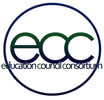Parent Voices
Welcome to the ECC blog featuring voices of parents, advocates and educators!
We will feature real people telling real stories and experiences as well as statements by ECC.
We will feature real people telling real stories and experiences as well as statements by ECC.

 RSS Feed
RSS Feed